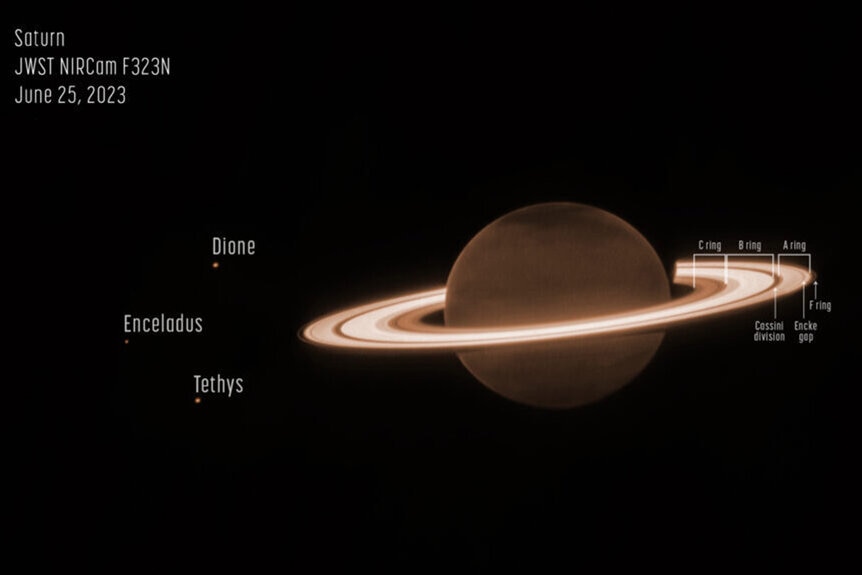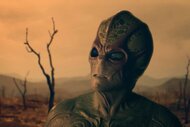Create a free profile to get unlimited access to exclusive videos, sweepstakes, and more!
NASA's JWST Captures Haunting Image of Saturn Haloed by Rings
Saturn never looked so good.
In SYFY’s The Ark (streaming now on Peacock!), the crew of the Ark One must abandon the Earth and take their chances on another world orbiting a nearby star. Succeeding at a mission like that requires taking the long view, and sacrificing personal safety and comfort in service of the bigger picture: the survival of our species. That said, the humans of The Ark might have been better served by looking a little closer to home.
NASA’s James Webb Space Telescope (JWST) has a similar concern. It was built for peering into the deepest recesses of space and time, and isn’t quite as good at looking at things which are astronomically close. That said, astronomers have taken a few opportunities to point the telescope at our own cosmic neighborhood and the results have been incredible. To date, the JWST has imaged Mars, Jupiter, Neptune, and Uranus, but the crown prince of the solar system, Saturn, was lacking a new infrared profile pic. Not anymore!
RELATED: JWST goes cloud gazing on Saturn's moon Titan
On June 25, 2023, astronomers pointed the JWST at Saturn and snapped some photos using the telescope’s Near-Infrared Camera (NIRCam). The images were taken as part of the Gauranteeed Time Observation program 1247, which is intended to test JWST’s ability to detect faint moons around the planet along with the comparatively bright rings.
JWST Reveals Saturn Like You've Never Seen It Before
The planet is dim in the image, allowing the rings to shine through as the true stars of the show. That’s because methane gas in the atmosphere absorbs almost all light at the telescope’s observational frequency, while the icy rings reflect light and glow brightly.
The A, B, and C rings are clearly visible, with the fainter F ring subtly hovering at the edges. The even fainter E and G rings aren’t visible in these images but can be seen in deeper exposures made available for research. Three of Saturn’s moons –– Dione, Tethys, and Enceladus –– can also be seen on the left side of the image. Enceladus has made headlines of its own recently, thanks to an incredible water plume 6,000 miles wide and the detection of phosphates in its subterranean ocean.
RELATED: Saturn’s Moon Enceladus Has All The Ingredients For Life
NASA released the photos in a blog post and noted additional subtler features in the atmosphere of the planet. Characteristics of the northern and southern hemispheres are largely consistent with what’s expected from Saturnian summer in the north and winter in the south. However, the northern hemisphere is darker than anticipated, “perhaps due to an unknown seasonal process affecting polar aerosols in particular,” the post suggests.
Deeper exposures and additional observations could reveal new information about Saturn’s atmosphere, rings, and system of moons. It might even shine a light on previously undiscovered moons, painting a fuller picture of one of the most complex planetary systems in the neighborhood. In the meantime, they’re just a delight to look at.
Catch the complete first season of The Ark, streaming now on Peacock!























